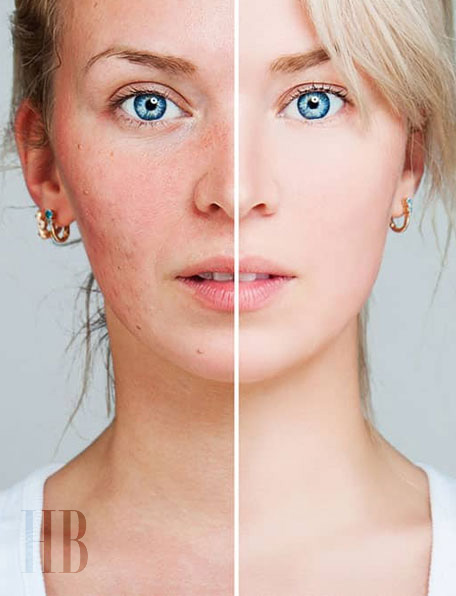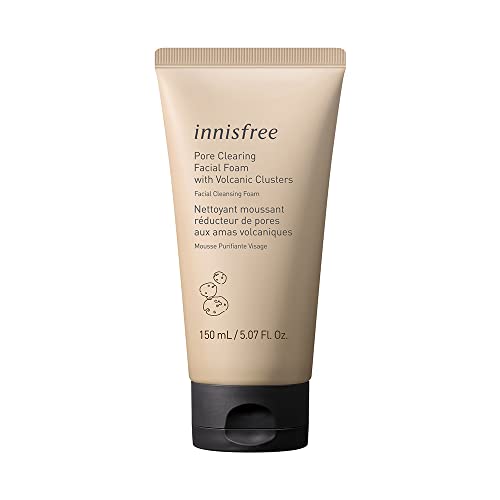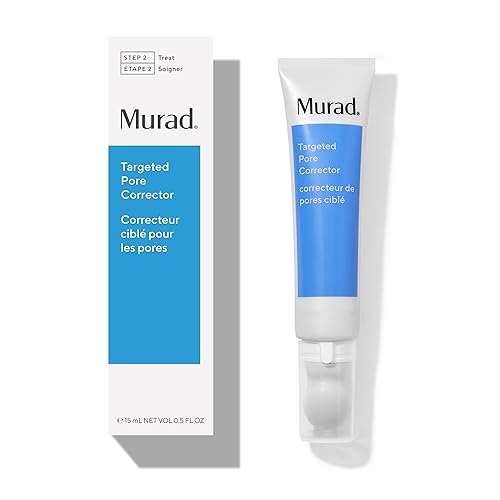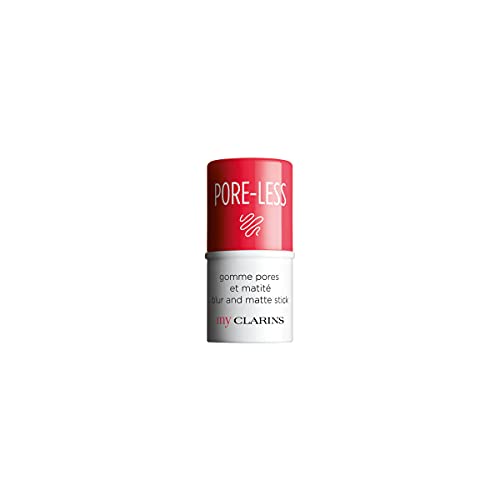Dry Patches & Polka-dot Pores
We've all experienced it.
Putting the finishing touches on a full face, then realizing in horror that the foundation on your nose has started to break up.
You see dry patches and polka dot pores on your nose where your foundation has settled.
Video: How to Reduce Bumpy, Textured Foundation for Smooth, Flawless Skin. How to Stop Foundation Sitting in Pores on Nose.
You now scramble to fix it, from putting on powder to primer—but nothing works.
And unfortunately, nothing less than re-doing the area will fix it.
I've encountered many of these in my professional career, most often happening to those with oily or dehydrated skin.
The key to solving this is two-fold:
- Short-term solution through makeup – Knowing how to hide large pores with proper makeup techniques
- Long-term solution through skincare – trying to minimize them through your skincare routine
The best way to stop foundation settling into your pores is by having a pore-minimizing skincare routine and knowing proper makeup techniques.
Follow the guidelines below, and we'll help you work towards permanently getting a smooth and flawless finish.

Ask the Expert: Why does your makeup settle into your pores?
BY SAMANTHA WELCH, ESTHETICIAN
There are several reasons why foundation may settle into the pores on the nose:
- Pore size – The pores on our noses are typically larger and more noticeable than those on other areas of the face, making them more prone to uneven makeup application. Irregular texture on some noses can also be caused by enlarged pores or ice-pick scars.
- Oily, congested skin – If you have oily skin, excess sebum can cause clogged pores.[2]
- Incorrect product choice – Pairing incompatible products and using a heavy, oily foundation can also exacerbate this problem
- Poor application technique – Not blending the right way can result in a patchy, uneven finish
- Dehydrated skin – Dry, dehydrated skin can cause your foundation to cling to your pores and emphasize their appearance.
By understanding the causes of why foundation settles into your pores, you can take steps to prevent it from happening.
This may include using a different foundation formula, changing your application technique, or taking steps to keep your skin hydrated and healthy.
How to Keep Foundation from Settling into Your Pores
A Step-by-Step Guide by our Makeup Artist, Michelle Evans
Have a skincare routine that regularly unclogs your pores
The size of your pores is genetic, so you can't really physically shrink them without cosmetic treatments like laser or chemical peels.
Changing the factors that affect large pores is beyond any skincare product's paycheck, but that doesn't mean we can't find ways to minimize their look.
Reference: Top 5 Steps to Unclog Your Pores & Refine Your Skin
Keeping your pores unclogged will not only prevent breakouts but also helps keep foundation from settling into them.
Instead of using pore strips or having regular extractions, preventing the build-up of oil and dirt in the first place is a gentler, better way to maintain clean pores.
Video: Minimize your large pores – Dermatologist Tips
Here are some examples of specific products and skin care techniques that can help you achieve this:
Pore Cleansers
Pore cleansers, particularly those containing ingredients like salicylic acid, work to unclog and purify pores. Salicylic acid is a beta-hydroxy acid (BHA) that exfoliates the skin, penetrating deep into pores to remove excess oil, dead skin cells, and debris that make pores appear larger. [4]. By keeping pores clean and minimizing congestion, these cleansers help create a smoother skin texture.
When pores are clear, foundation is less likely to settle into any uneven areas or amplify the appearance of pores. Incorporating a pore cleanser into your skincare routine provides a foundation for better makeup application, ensuring a more even and flawless finish.
It's important to note that while pore cleansers can be effective, it's advisable to use them in moderation and follow up with proper hydration to maintain a balanced and healthy skin barrier. This combination of cleansing and moisturizing contributes to an optimal canvas for makeup application, reducing the chances of foundation settling into pores.
Related: The Best Face Washes & Cleansers for Oily Skin and Large Pores – Ultimate Guide & Review
Exfoliators
Exfoliation is an essential step in achieving smooth and even skin texture, preventing foundation from settling into pores.
Regular exfoliation helps to remove dead skin cells and unclog your pores, making them appear smaller. Various exfoliating products are available, such as physical exfoliators (like microdermabrasion, dermaplaning) or chemical exfoliators (like resurfacing facial pads with alpha-hydroxy or beta-hydroxy acids). [5]
There are two primary categories of exfoliators: physical and chemical.
Physical Exfoliators utilize gritty particles to manually slough away dead skin cells, providing an immediate sensation of smoother skin. Ideal for those with oily skin, these exfoliants should be used cautiously to avoid irritation, particularly if you have sensitive skin.
Chemical Exfoliators contain active ingredients such as alpha-hydroxy acids (AHAs) or beta-hydroxy acids (BHAs) to dissolve dead skin cells and promote skin renewal. These exfoliants offer a more controlled and even exfoliation, making them suitable for various skin types, including sensitive skin. To prevent over-exfoliation, following product instructions and gradually introducing chemical exfoliators into your skincare routine is essential.
The choice between physical and chemical exfoliators often depends on personal preference, skin type, and specific skincare goals. Some individuals may prefer the immediate tactile sensation of physical exfoliants, while others may opt for the gentler and more controlled exfoliation provided by chemical exfoliants. It's also common for people to incorporate both types into their skincare routine, using them on different days or in additional steps of their regimen for a balanced approach.
It's important to note that exfoliation should be done in moderation, as over-exfoliation can lead to sensitivity. Incorporating exfoliators into your skincare routine, 1-2 times a week, depending on your skin type, can contribute to a clearer complexion and enhance the effectiveness of your pore care routine.
Reference: Top 5 Steps to Unclog Your Pores & Refine Your Skin
Toners
Toners help to balance your skin's pH, tighten your pores, and reduce their appearance.[6]
Many toners are formulated with hydrating ingredients such as hyaluronic acid or glycerin. Proper hydration maintains skin elasticity and reduces the likelihood of foundation settling into pores by preventing dry patches.
Toners also prepare the skin to absorb subsequent skincare products more effectively. Applied after cleansing, toners remove any remaining impurities and allow serums, moisturizers, and exfoliants to penetrate the skin for optimal results.
Related: The Best AHA + BHA Toners for Different Skin Types
Moisturizers
Keeping your skin hydrated can help to plump up the skin and make your pores appear smaller.[7]
Properly hydrated skin also helps regulate oil production, preventing excess sebum that can lead to enlarged pores. A lightweight, non-comedogenic moisturizer ensures optimal hydration without clogging pores.
Related: The Best Non-Comedogenic Moisturizers for Acne-Prone Skin; The Best Non-Comedogenic Moisturizers for Oily Skin
Pore Treatments & Correctors
Pore treatments are created to address particular problems associated with enlarged pores, including excessive oil production and congestion. Pore correctors concentrate on enhancing the texture of the skin, smoothing and minimizing the visibility of enlarged pores.
Serums are potent formulations intended to deliver active components deeply into the skin. Some also have retinoids designed to build collagen.[8] (Alternate these with your acids to avoid irritation.)
When selecting products, consider your skin type and any specific concerns you want to address. It's often beneficial to incorporate these products into your evening skincare routine, gradually introducing them to allow your skin to adjust. Consistency is key to seeing results over time, and sunscreen is crucial to protect your skin, especially when using ingredients like retinoids.
Pore Masks
Pore masks are skincare formulations designed to address enlarged pores and promote a smoother complexion specifically.
Clay masks, enriched with kaolin or bentonite clay, absorb excess oil and impurities, reducing the appearance of pores.
Charcoal masks featuring activated charcoal detoxify the skin by drawing out impurities, helping to refine and balance the complexion.
Exfoliating masks containing alpha-hydroxy acids (AHAs) or beta-hydroxy acids (BHAs) offer a targeted approach to pore care. By removing dead skin cells and unclogging pores, these masks contribute to a more even skin texture.
Pore strips and Sheet masks also play a role in pore management, lifting away debris or incorporating ingredients like niacinamide and hyaluronic acid to balance oil production and hydrate the skin.
Consider your skin type and concerns when incorporating pore masks into your routine. Use them as directed, typically 1-2 times a week, and follow up with a moisturizer to maintain skin hydration. While these masks can provide immediate benefits, consistency is vital for long-term improvements in pore appearance.
Mattifying Sunscreens
Sunscreens are indispensable in maintaining healthy and pore-refined skin by shielding it from harmful UV rays. Prolonged sun exposure can damage skin, premature aging, and enlarged pores. Choosing a broad-spectrum sunscreen with SPF 30 or higher helps prevent these issues.
Look for non-comedogenic formulations to avoid clogging pores. Gel-based or lightweight sunscreens are ideal for oily or acne-prone skin, ensuring protection without exacerbating pore-related concerns. Regularly applying sunscreen safeguards the skin from UV damage and supports overall skin health.
Incorporate sunscreen into your daily skincare routine, applying it generously and reapplying as needed, especially during prolonged sun exposure. This practice protects against sun damage and complements other skincare efforts, contributing to a radiant and pore-refined complexion.
Related: The Best Sunscreens for Oily Skin (Dermatologist Recommended); The Best Non-Comedogenic Sunscreens for Acne-Prone Skin
Incorporating some of these pore-minimizing skincare techniques into your routine prepares your skin and gives your makeup the best chance to perform.
If you have sensitive skin, alternate your actives instead of layering them to avoid irritation.
Pore Care Complete Sets
You can also opt for complete sets, to make everything easier.
Product sets often include a range of items specifically formulated to work together, providing a comprehensive solution for pore care. This can lead to more effective results compared to using individual products.
Use silicone-based makeup to smoothen your skin texture
A. Using Silicone-based products
Due to their unique properties, silicone-based products are often considered the best for large pores and textured skin.
Here's why:
- Smoothing effect – Silicones have a smooth, silky texture that can help fill fine lines, wrinkles, and large pores, creating a smooth surface for your foundation.
- Blurring effect – Silicone-based products have a blurring effect on the skin, helping to minimize the appearance of imperfections, including large pores and textured skin.
- Non-comedogenic – Silicones are non-comedogenic, meaning they won't clog your pores, which is essential for those with large pores and textured skin.
- Hydrating – Silicones are hydrophobic, meaning they repel water, but they also form a barrier on the skin that can help to lock in moisture and prevent moisture loss. This can be beneficial for those with dry or dehydrated skin.
- Long-lasting – Silicone-based products have a long-lasting formula that can help to keep your foundation in place throughout the day, reducing the likelihood of it settling into your pores.
Silicone-based primers and foundations are two popular types of silicone-based products that can help to minimize the appearance of large pores and textured skin.
Pore Minimizing Primers
Silicone-based primers help to create a smooth base for your makeup, reducing the likelihood of your foundation settling into your pores.
Foundation sinking into pores can often occur due to excess oil or incorrect product application, resulting in an uneven appearance and emphasizing the skin's texture. Using a pore-minimizing primer and applying foundation sparingly can help alleviate this issue.
Pore Minimizing Foundations
Silicone-based foundations provide a smooth, flawless finish and help to blur the appearance of imperfections, including large pores and textured skin.
It's important to use a lightweight and non-comedogenic formulation. Foundation shows pores if applied too heavily and can emphasize skin texture instead of providing a smooth finish.
PSA: There have been rumors and concerns in the beauty industry about the safety and efficacy of silicone-based products. Some claim silicones are unsafe for skin use, cause breakouts, and clog pores.
However, scientific evidence does not support these claims and is generally considered false. Silicones are widely used in medical and personal care and are considered safe for topical use. They are FDA-approved and have undergone extensive safety testing.
Video: How to Make Your Pores DISAPPEAR With Makeup!
B. Using products with the same base formulation
Using makeup products with the same base, such as silicone-based primer with silicone-based foundation or water-based primer with water-based foundation, can have several benefits for your skin.
- Improved Adhesion – Products with the same base tend to work better together as they have a similar chemical composition, which allows them to adhere to your skin more effectively. This helps ensure your makeup stays in place for longer without settling into fine lines or pores.
- Better Compatibility – Products with the same base are often better tolerated by the skin as they have similar ingredients and are less likely to irritate. This can be especially important for those with sensitive or easily irritated skin.
- Enhanced Effectiveness – Using products with the same base can improve the overall effectiveness of your skincare and makeup routine. For example, using a silicone-based primer with a silicone-based foundation can help to create an even more flawless and pore-minimizing finish on the skin.
- Better Layering – Products with the same base can also be easier to layer, as they are less likely to mix or react with each other. This can create a more natural and seamless look without unwanted caking or flaking.
Using the same formulation across your makeup products can reduce the likelihood of foundation settling in pores, ensuring a more consistent and compatible application experience.
Learn makeup techniques that will hide your pores
Here are some techniques to prevent your foundation from settling into your pores:
- Dab primer directly on pores – Dab a SMALL amount of silicone-based primer directly on your pores, focusing on the areas around the areas where your pores are the largest. Carefully build as you go; only apply a little at a time. Silicone primers tend to slide off if you use too much.
- For large pores and ice-pick scars, fill indented areas – Using the warmth of your fingertips, gently push your primer in with a rolling motion into your pores until filled. Make sure your primer is non-comedogenic, has a matte finish, and that your skin is well-moisturized. This prevents the overproduction of oil that can dislodge your makeup later in the day.
- Wait for your primer to dry – Give your primer a few minutes to set before applying foundation.
- Apply a silicone-based foundation – Use a damp sponge or soft blending brush to blend it evenly over your skin. Use circular motions to buff the foundation and work it in.
- Set with powder – To further prevent your foundation from settling into your pores, set it with a light dusting of translucent powder using a fluffy brush.
Learning from makeup-artists can help prevent your makeup from sinking into pores, resulting in a smoother, more flawless appearance.
Video: SHRINK LARGE PORES INSTANTLY WITH THIS TRICK! by Wayne Goss, Makeup Artist
Using these techniques, you can fill in and smooth over your pores, creating a smooth base for your foundation.
Your primer will help prevent your makeup from settling in pores, ensuring a fresh look that stays in place throughout the day.
Foundation settling in your pores can be frustrating, but with the right skincare and makeup techniques, it is possible to prevent this from happening.
By keeping your skin clean, exfoliated, and protected with sunscreen, you can help to prevent the development of enlarged pores. Additionally, using a silicone-based primer and foundation, and taking the time to properly blend your makeup, can help to give you a smooth, even, and natural-looking complexion that minimizes the look of large pores.
Whether you have textured skin or want to achieve a flawless finish, these tips and techniques can help you achieve the beautiful, glowing complexion you desire.

Recommended Acne Programs
If you're suffering from severe acne, it's best to undergo a program that will help you get to the root of the problem and address the causes.
- The Acne No More System by Mike Walden – Restores hormonal balance to achieve permanent clear skin for life.
- The “Trifecta Glow” System – A highly potent brightening treatment guaranteed to reduce the appearance of dark spots & acne scars within 4 weeks.
- La Roche-Posay – Effaclar Dermatological 3 Step Acne Treatment System
- Murad – Acne Control Kit – Breakout Skin Care Kit
- Mario Badescu – Acne Starter/Control/Repair Kit
- Dermalogica – Clear Start Breakout Clearing Kit
FAQ
References:
- Brown, Bobbi. Bobbi Brown makeup manual: For everyone from beginner to pro. Hachette UK, 2008.
- Roh, M., Han, M., Kim, D., & Chung, K. (2006). Sebum output as a factor contributing to the size of facial pores. British Journal of Dermatology, 155(5), 890-894.
- Rozell, C. (2009). Face Time: The Art of Makeup (Doctoral dissertation).
- Draelos ZD. The effect of a daily facial cleanser for normal to oily skin on the skin barrier of subjects with acne. Cutis. 2006 Jul;78(1 Suppl):34-40. PMID: 16910029.
- DeHaven, C. (2015). Mechanisms of exfoliation. Science of Skincare.
- Smith, M. (2005). Toners and astringents. In Cosmetic Formulation of Skin Care Products (pp. 91-102). CRC Press.
- Lee, J. S., Ha, J., Shin, K., Kim, H., & Cho, S. (2019). Different cosmetic habits can affect the biophysical profile of facial skin: a study of korean and chinese women. Annals of Dermatology, 31(2), 175-185.
- Dong, J., Lanoue, J., & Goldenberg, G. (2016). Enlarged facial pores: an update on treatments. Cutis, 98(1), 33-36.








































